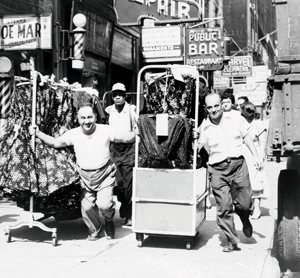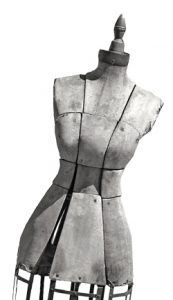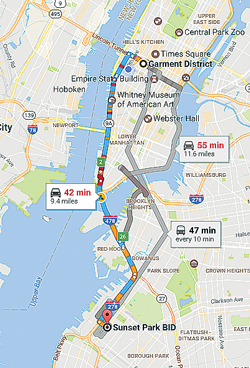 The Garment District was once the heart of Manhattan’s colorfully named Tenderloin red-light district, but since the early 20th century it’s been home to the city’s fashion manufacturing industry. The area — bounded roughly by Seventh and Ninth avenues and West 35th and 42nd streets — is something of a vestige of the past, with workers toiling away on sewing machines and stretching fabrics in nondescript buildings. It has largely survived the last three decades through the help of a long line of mayors, starting with Ed Koch, who in 1987 created the Special Garment Center District to preserve manufacturing space. But faced with rising rents, technology and globalization, the industry’s footprint has massively shrunk in the area. Garment firms have fled to cheaper neighborhoods — most notably Brooklyn’s Sunset Park, which has emerged as a miniature garment hub. Now Mayor Bill de Blasio is looking to relocate the holdouts and hoping to lift zoning restrictions on the district in a move that would open 20 blocks of prime Midtown to development. Whether he can pull it off remains to be seen. Critics argue that the city should continue protecting the neighborhood so it doesn’t go the way of the antique sewing machine.
The Garment District was once the heart of Manhattan’s colorfully named Tenderloin red-light district, but since the early 20th century it’s been home to the city’s fashion manufacturing industry. The area — bounded roughly by Seventh and Ninth avenues and West 35th and 42nd streets — is something of a vestige of the past, with workers toiling away on sewing machines and stretching fabrics in nondescript buildings. It has largely survived the last three decades through the help of a long line of mayors, starting with Ed Koch, who in 1987 created the Special Garment Center District to preserve manufacturing space. But faced with rising rents, technology and globalization, the industry’s footprint has massively shrunk in the area. Garment firms have fled to cheaper neighborhoods — most notably Brooklyn’s Sunset Park, which has emerged as a miniature garment hub. Now Mayor Bill de Blasio is looking to relocate the holdouts and hoping to lift zoning restrictions on the district in a move that would open 20 blocks of prime Midtown to development. Whether he can pull it off remains to be seen. Critics argue that the city should continue protecting the neighborhood so it doesn’t go the way of the antique sewing machine.
438
The number of garment manufacturing firms left in the Garment District out of 1,568 citywide as of 2015, the most recent year on record. That is about half the number of firms that existed in the district in 2000. By comparison, there are around 100 firms (and growing) in Sunset Park.
 1984
1984
The year sculptor Judith Weller finished and installed her now-iconic statue entitled “Garment Worker” at West 39th Street and Seventh Avenue. She modeled it after her father, who worked one of the hand-operated sewing machines during her childhood. The giant “needle threading a button” sculpture joined it nearby in 1996.
$51.3M
The cash that the city’s Economic Development Corporation pledged in March to garment companies to help them move out of the district. The payouts will come in the form of grants to buy new technology, train employees and cover relocation costs to manufacturing spaces in Sunset Park.
 95%
95%
The drop in the number of manufacturing jobs in the Garment District between its peak in the 1920s, when there were roughly 100,000 garment workers employed there, and 2015, when the number clocked in at 5,100, according to city estimates.
$200
The going rate that Garment District racketeer Dopey Benny — who was tapped around 1910 by garment unions to protect their members from employer-hired thugs during strikes — charged to break someone’s thumb or arm. That’s about $5,000 in 2017 dollars.
$95B
The difference between textile and apparel imports in the U.S. ($117.1 billion) and exports ($22.2 billion). That gulf has grown substantially since 1989, when the federal government first started tracking the stats and when the country imported $22 billion and exported $7.1 billion.
 7.86 miles
7.86 miles
The distance — as the crow flies — between the Garment District and the city-owned Brooklyn Army Terminal in Sunset Park, where the city wants to relocate some manufacturers. Critics contend that it’s too far because the Garment District relies on a delicate ecosystem of manufacturers, designers and buyers being close to one another. How long it will actually take fabric-hauling truckers to get between the two areas obviously depends on traffic, but anyone who’s driven the route knows that an hour is not out of the question.
$78.52
The average asking rent for office space in the Garment District in 2016’s fourth quarter. That was just below the roughly $80 figure for the broader Midtown market, but higher than the $68 average in Midtown South, which is attracting young tech and creative companies looking to save money on office space.
